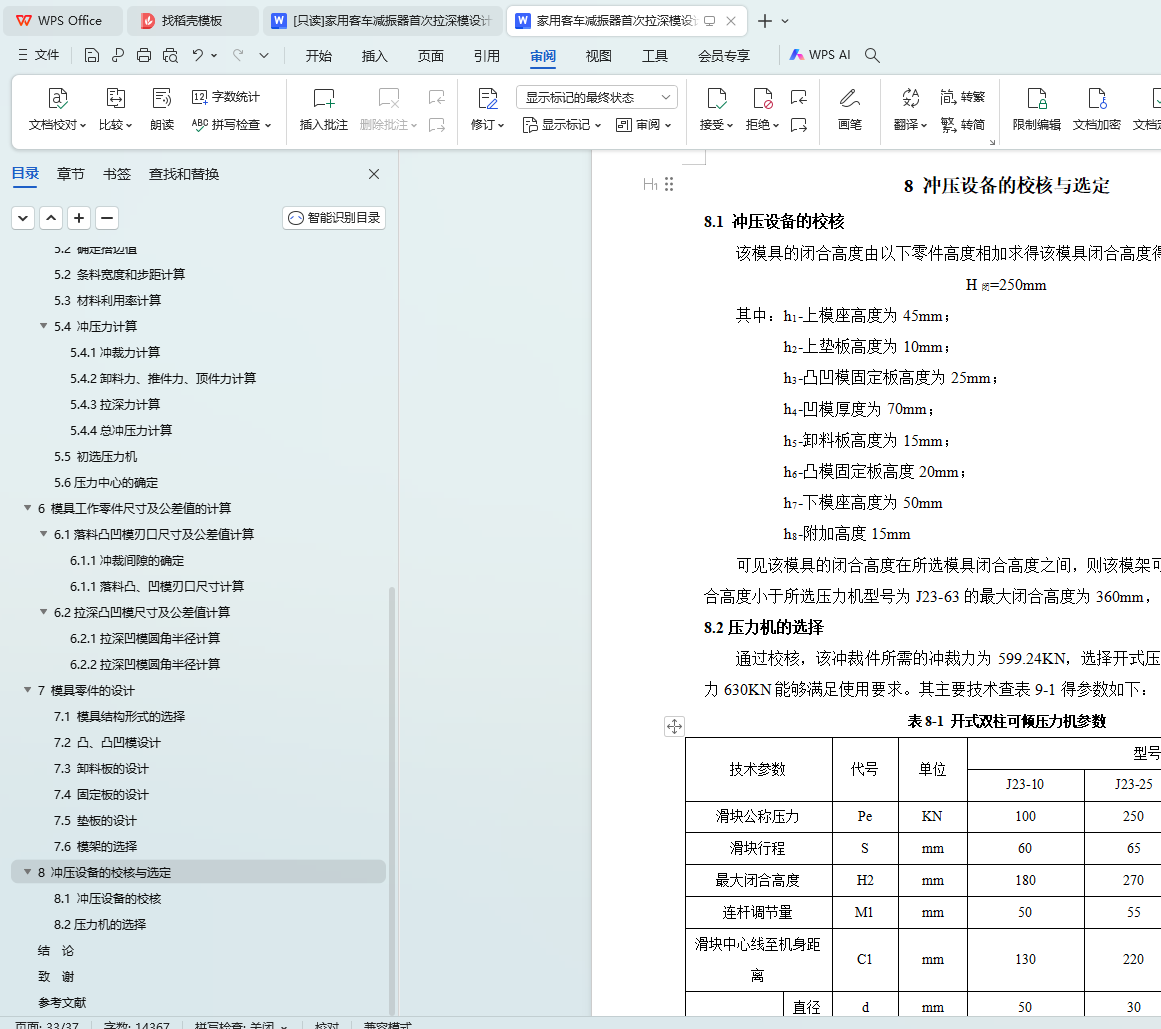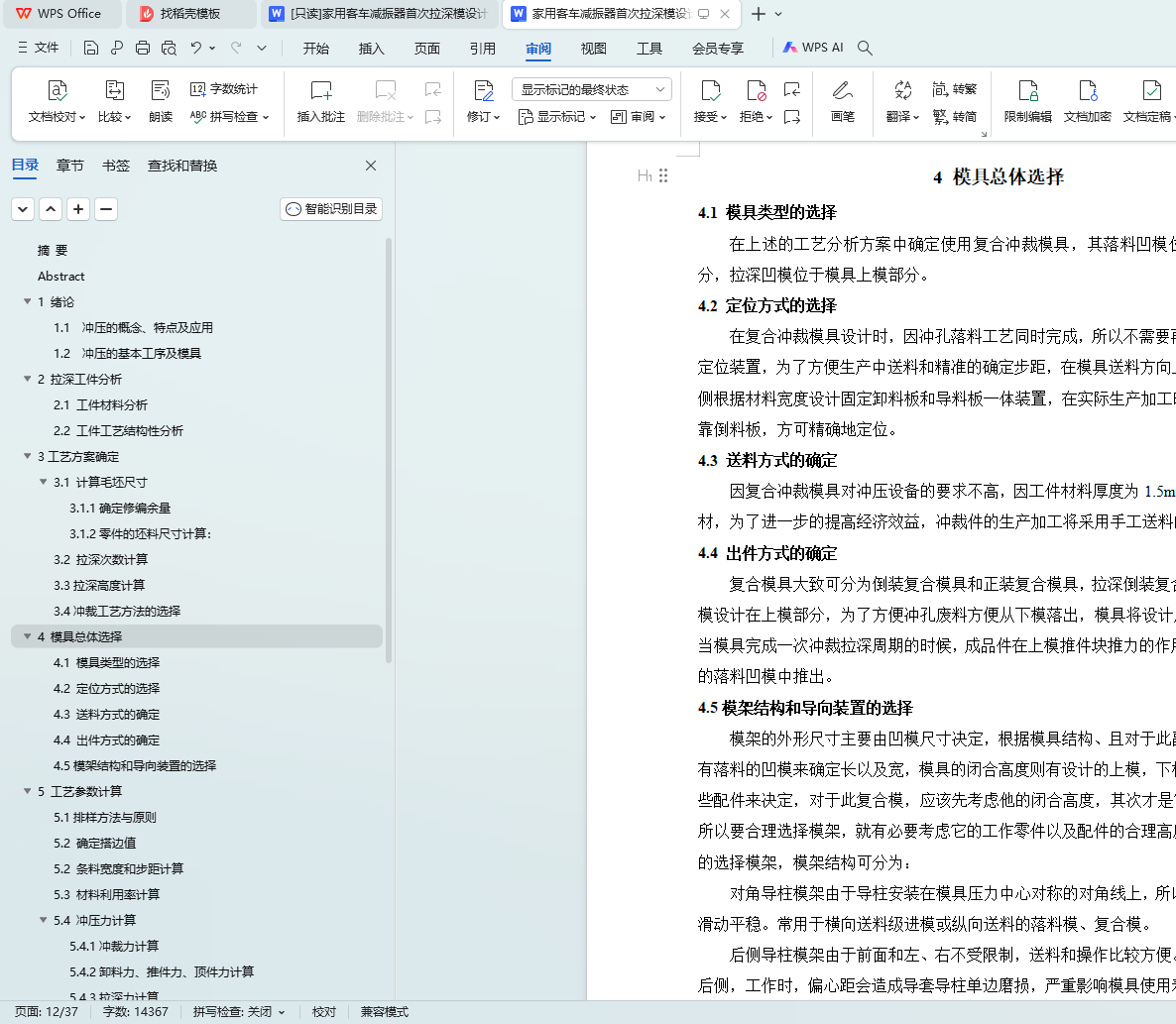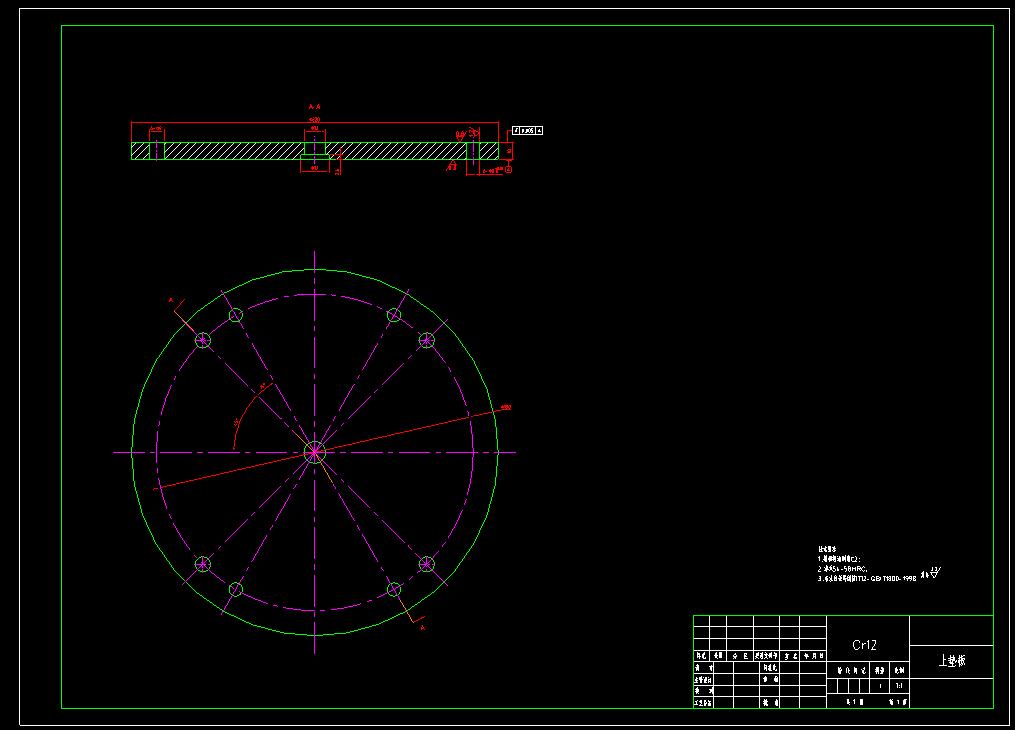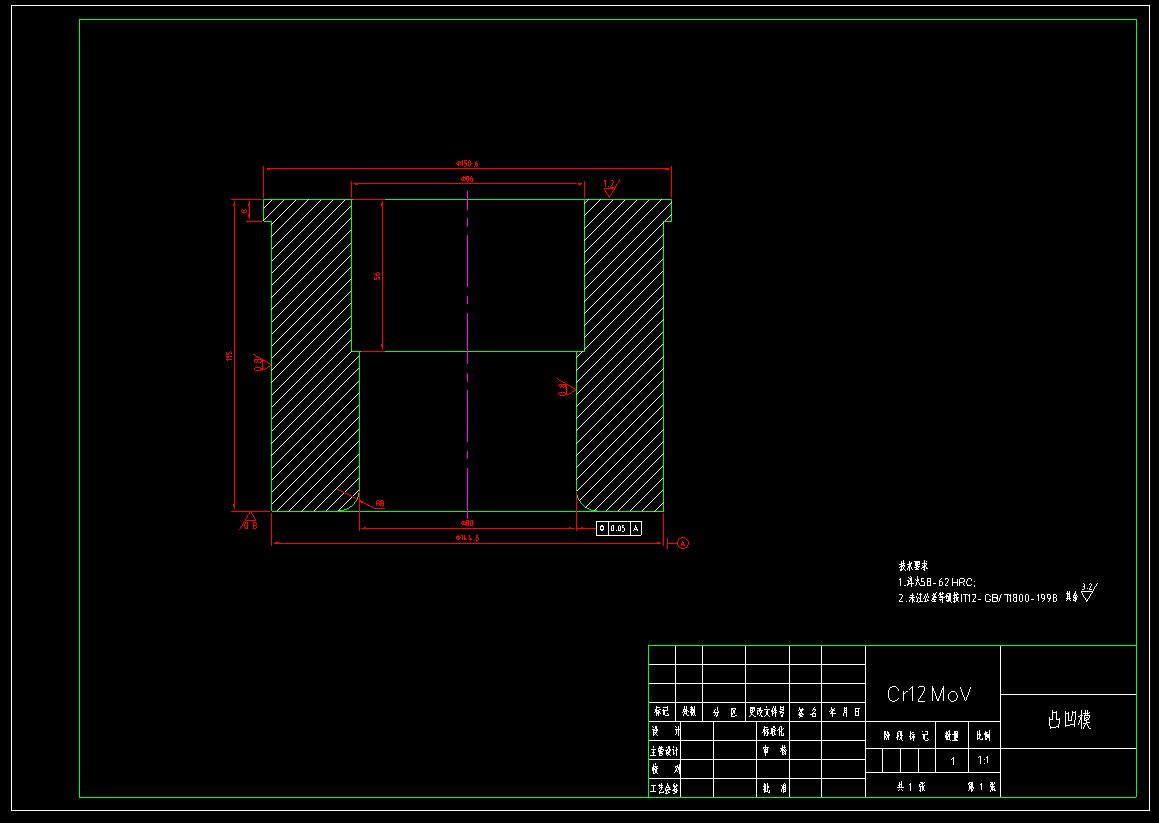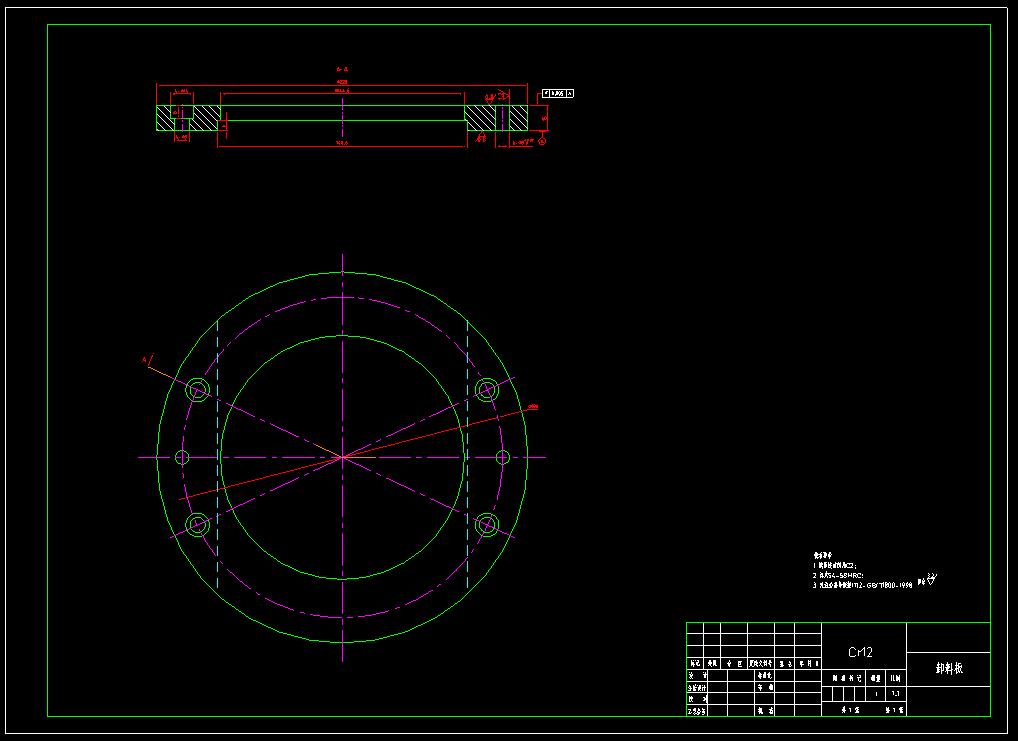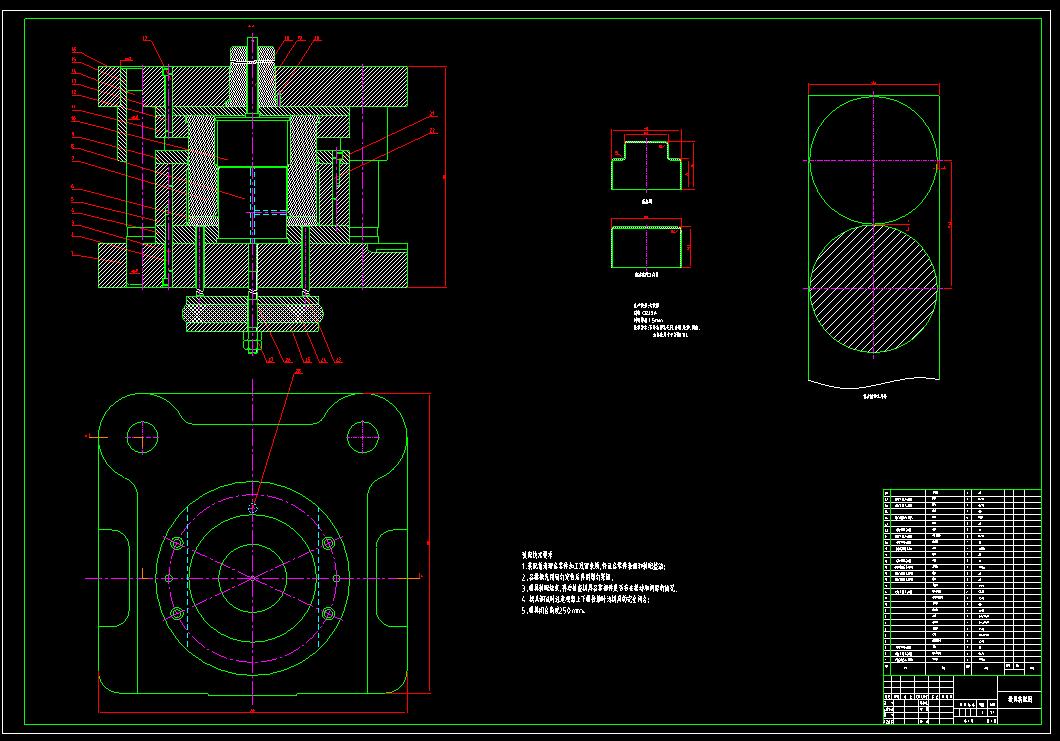摘 要
本文聚焦于家用客车减振器首次拉深模的设计过程。在课题开展之初,对工件的工艺类型进行了深入分析,并基于工件的尺寸数据,筛选出合适的设计方案。随后,进行了模具的排样设计,通过查阅相关资料,精确计算了工件坯料的尺寸,并合理选择了排样的搭边值。在此基础上,进一步计算了模具的压力中心和冲压力,从而选择了相匹配的压力机。为提升生产效率、保证生产精度并降低模具制造成本,本设计结合了工件的结构特点,采用了一副复合模具和一副单工序模具的组合方案。在模具设计之前,特别关注了工件图纸中未标注公差的尺寸,以确保模具制造的精度。经过多次排样分析,最终完成了模具的结构设计,并绘制了模具总装图及零件图,编写了详细的设计说明书。
关键词:家用客车减振器;拉深模设计;排样设计;模具精度;复合模具
Abstract
This paper focuses on the design process of the first deep absorber. At the beginning of the project, the process type of the workpiece was deeply analyzed, and the appropriate design scheme was selected based on the size data of the workpiece. Then, the mold layout design is carried out, and by consulting the relevant data, the size of the workpiece billet is accurately calculated, and the edge value of the layout is reasonably selected. Based on this, the pressure center and punching pressure of the mold are further calculated. In order to improve the production efficiency, ensure the production accuracy and reduce the cost of mold manufacturing, this design combines the structural characteristics of the workpiece, and adopts the combination scheme of a pair of composite mold and a pair of single process mold. Before mold design, special attention was paid to the dimensions without annotated tolerances in the workpiece drawings to ensure the accuracy of mold fabrication. After many sample arrangement and analysis, the structural design of the mold was finally completed, and the mold assembly drawing and parts drawing were drawn, and the detailed design manual was prepared.
Key words: household bus shock absorber; deep die design; sample design; die precision; composite die
目 录
摘 要
Abstract
1 绪论
1.1 冲压的概念、特点及应用
1.2 冲压的基本工序及模具
2 拉深工件分析
2.1 工件材料分析
2.2 工件工艺结构性分析
3工艺方案确定
3.1 计算毛坯尺寸
3.1.1确定修编余量
3.1.2零件的坯料尺寸计算:
3.2 拉深次数计算
3.3拉深高度计算
3.4冲裁工艺方法的选择
4 模具总体选择
4.1 模具类型的选择
4.2 定位方式的选择
4.3 送料方式的确定
4.4 出件方式的确定
4.5模架结构和导向装置的选择
5 工艺参数计算
5.1排样方法与原则
5.2 确定搭边值
5.2 条料宽度和步距计算
5.3 材料利用率计算
5.4 冲压力计算
5.4.1冲裁力计算
5.4.2卸料力、推件力、顶件力计算
5.4.3拉深力计算
5.4.4总冲压力计算
5.5 初选压力机
5.6压力中心的确定
6 模具工作零件尺寸及公差值的计算
6.1落料凸凹模刃口尺寸及公差值计算
6.1.1冲裁间隙的确定
6.1.1落料凸、凹模刃口尺寸计算
6.2拉深凸凹模尺寸及公差值计算
6.2.1拉深凹模圆角半径计算
6.2.2拉深凹模圆角半径计算
7 模具零件的设计
7.1 模具结构形式的选择
7.2 凸、凸凹模设计
7.3 卸料板的设计
7.4 固定板的设计
7.5 垫板的设计
7.6 模架的选择
8 冲压设备的校核与选定
8.1 冲压设备的校核
8.2压力机的选择
结 论
致 谢
参考文献




